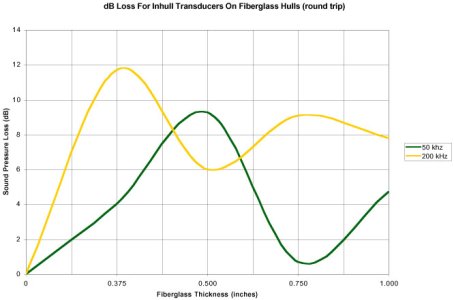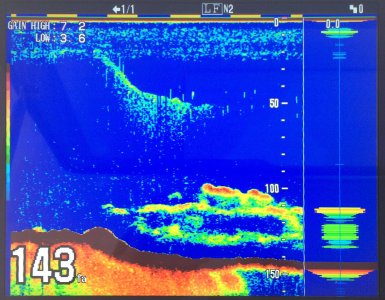T
TeamRezoned
Guest
Good morning,
We have a 33T Contender that is currently set up with a 587 and pair of 1KW H/L transducers. We are doing more and more bottom fishing SMALL, LOW RELIEF spots in deep water (500'+) and the current set up works ok, but we are looking for more detail especially in 500'-1,000' of water. Our PRIMARY goal is to be able to determine hard vs soft bottom and distinguish fish holding close to bottom.
We have come to the realization that we are going to need a complete overhaul of our fishfinder system in order to maximize our ability to fish in these depths.
We have decided on the FCV295 as the bottom machine, but need to identify which transducer is going to work best with our boat. We are currently looking at the CM599LH and the R599LH. It is my understanding that the only difference between these two units is that one is keel-pocket mounted and one is a "in hull" transducer. below are my concerns with each:
1. CM599LH- This would would have to be glassed in to the keel of the boat. Our boat has very little flat space on the keel, and there are a couple through hull water pickup that may have to be moved in order to make the installation work. The glass work for this installation also comes with a hefty price tag.
2. R599LH- I understand that these "in Hull" transducers lose some power because they have to shoot through the glass. The hull of our boat is solid glass, and remarkably thin (5/8" or so) so I am not sure how much power will be lost. This option is by far the path of least resistance installation-wise.
Does Furuno have any deep water examples of the difference between these transducers? I would imagine that either option will be far and away better than our current 1KW setup, especially when paired with the 295 unit.
I am looking forward to any feedback you guys can provide.
Thanks in advance,
Dan
We have a 33T Contender that is currently set up with a 587 and pair of 1KW H/L transducers. We are doing more and more bottom fishing SMALL, LOW RELIEF spots in deep water (500'+) and the current set up works ok, but we are looking for more detail especially in 500'-1,000' of water. Our PRIMARY goal is to be able to determine hard vs soft bottom and distinguish fish holding close to bottom.
We have come to the realization that we are going to need a complete overhaul of our fishfinder system in order to maximize our ability to fish in these depths.
We have decided on the FCV295 as the bottom machine, but need to identify which transducer is going to work best with our boat. We are currently looking at the CM599LH and the R599LH. It is my understanding that the only difference between these two units is that one is keel-pocket mounted and one is a "in hull" transducer. below are my concerns with each:
1. CM599LH- This would would have to be glassed in to the keel of the boat. Our boat has very little flat space on the keel, and there are a couple through hull water pickup that may have to be moved in order to make the installation work. The glass work for this installation also comes with a hefty price tag.
2. R599LH- I understand that these "in Hull" transducers lose some power because they have to shoot through the glass. The hull of our boat is solid glass, and remarkably thin (5/8" or so) so I am not sure how much power will be lost. This option is by far the path of least resistance installation-wise.
Does Furuno have any deep water examples of the difference between these transducers? I would imagine that either option will be far and away better than our current 1KW setup, especially when paired with the 295 unit.
I am looking forward to any feedback you guys can provide.
Thanks in advance,
Dan




